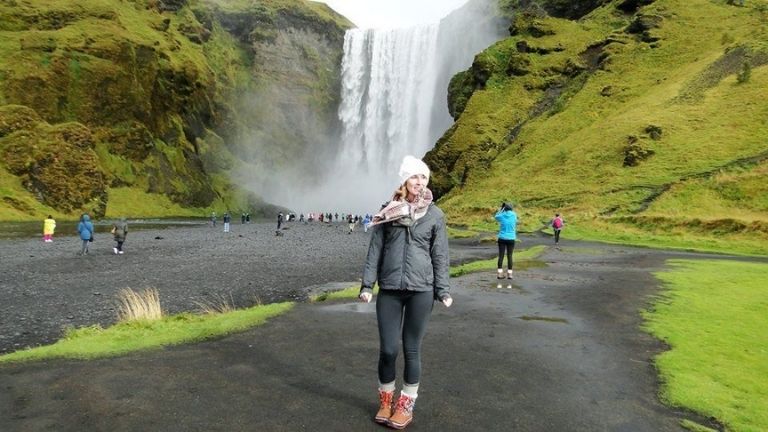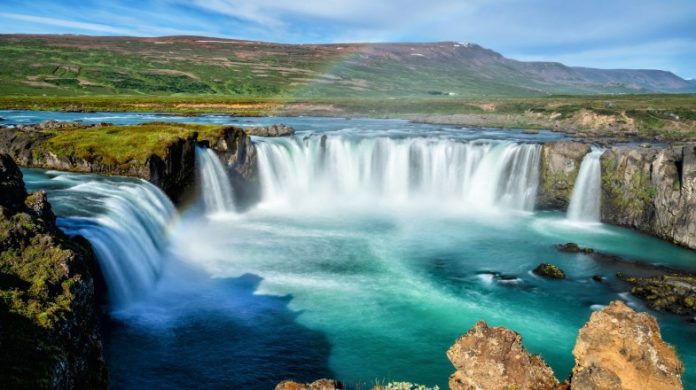Are you thinking about taking a trip to Iceland this year? Good choice! With its incredible natural landscapes, fun culture, and unique activities, Iceland should be on every traveler’s bucket list. But with varying weather, prices, and things to see each month, you probably want to know—when’s the best time to visit Iceland? Well!
Whether you dream of bathing in the Blue Lagoon, chasing the Northern Lights, or just avoiding crowds and saving money, this guide’s got you covered. Let’s dive in!
Seeing the Dazzling Northern Lights
If watching the magical Aurora Borealis light up the night sky is at the top of your Iceland wishlist, visit between September and March. During Iceland’s long, dark winter nights, you’ll have prime aurora hunting grounds.
While the Northern Lights are unpredictable, September and March around the Spring Equinox tend to provide long, clear nights perfect for spotting them. Bundle up, escape the city lights, and keep an eye on the heavens!
Relaxing in the Blue Lagoon’s Healing Waters
This world-famous, milky blue geothermal pool and spa is an iconic Icelandic attraction. The mineral-rich waters are believed to promote relaxation and benefit certain skin conditions, attracting over a million bathers a year. The Blue Lagoon is open year-round, but for warmer waters, aim for summer between May and August. However, many enjoy contrasting the steaming lagoon with wintery, snow-covered surroundings between October and April.
Whale Watching Extravaganza
Get ready for a whale sightseeing bonanza if you visit Iceland’s picturesque coasts between April and September! As cold nutrient-rich waters create excellent feeding grounds, it’s prime season for magnificent whales like Humpbacks, Minkes, and even Blues to migrate here. Other wildlife like orcas, dolphins, seals, and porpoises also thrive thanks to the midnight sun’s long days. Hop on a boat tour for front-row seats to nature’s greatest show!
Beating High-season Crowds and Costs
Want to save money and steer clear of thronging tourists? Then Iceland’s lively high summer season from June through August isn’t for you. While the weather’s most temperate, sunshine-filled days are the longest, and vibrant festivals rock Reykjavík, you’ll pay inflated prices for everything and popular attractions will be packed. For thinner crowds at lower cost with cooler but often still fair weather, come in the late spring of May or early fall around September.
Capturing Iceland’s Scenery in All Its Glory
Best Time to Visit Iceland breathtaking and diverse landscapes are straight out of fairy tales no matter when you visit. However, some special natural spectacles like puffin and golden plover migrations, the midnight sun, fall colors, and frozen glaciers and waterfalls only happen during certain months.
For wildlife, hit the spring/summer. For that magical midnight sun? Visit on June’s summer solstice. And for dazzling ice caves under glaciers or frozen waterfalls, wintery November through March is ideal.
Read More- 6 Beautiful Resorts in Arizona For Families To Book for Next Vacation
Seeking Out Special Events and Festivals
Beyond its natural wonders, Iceland boasts a vibrant cultural scene—and a full events calendar! There are exciting festivals almost every month celebrating history, music, film, art, literature, and even beer. The biggest bashes happen around New Year’s, Midsummer in June, and during August’s Verslunarmannahelgi national holiday weekend. But year-round you’ll find cool happenings like Viking-themed feasts during January’s ancient Þorrablót seasonal festival or cutting-edge tunes at November’s epic Iceland Airwaves music festival.
Best Time to Visit Iceland Month by Month

January brings affordable travel and lively cultural festivals like Þorrablót and Dark Music Days. Magical ice caves and Northern Lights displays can also be enjoyed. February continues the winter fun with events like Winter Lights and Food & Fun Fests brightening the cold, dark days along with excellent Northern Lights viewing opportunities.
In March, winter starts loosening its grip with still a chance of snowfall for winter sports and Northern Lights chasing. Festivals and Beer Day give a unique peek into Icelandic culture. April welcomes spring’s return of migrating puffins and birds. Visitors can see sights like the Golden Circle at lower costs and smaller crowds before peak season.
Summer kicks off in June – the best time to visit Iceland to enjoy incredible scenery and cultural festivals if you don’t mind some crowds and higher prices. Don’t miss phenomena like the midnight sun and Reykjavík’s Viking and art festivals.
July and August bring peak crowds and prices but the good weather allows vigorously exploring natural wonders above the Arctic Circle between adventures. When you need a break, Reykjavík hosts awesome summer events.
Come September, summer winds down taking some tourists home and lowering lodging expenses a touch. Yet you can still enjoy Best Time to Visit Iceland epic summer scenery and activities with cooler temps but often decent weather and over 13 hours of sunlight. Festivals like Reykjavík Jazz and the Night of Lights keep the capital rocking.
October brings vivid autumn foliage, the return of the Northern Lights, and berry picking. While daylight wanes, Reykjavík hosts the upbeat Iceland Airwaves music festival and other vibrant cultural events.
Frigid December entices travelers with picture-postcard Christmas charm and the year’s best chance of eyeing the magical Northern Lights. While some services are limited, those twinkling holiday villages and lively New Year’s Eve parties make December worth braving the icy weather!


